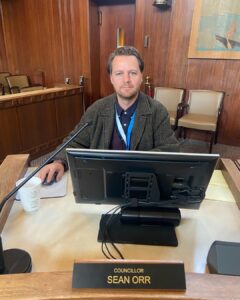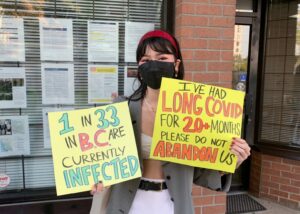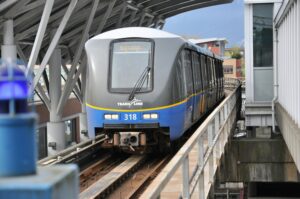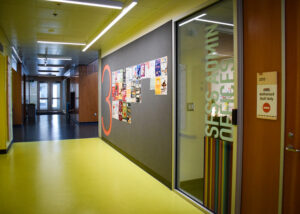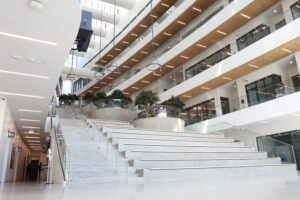by Devana Petrovic, Staff Writer
If you don’t fall under the miniscule category of students who have their own vehicle, snow tires, and are able to afford and find parking on campus, chances are that you’ve probably been through the horrors of public transit during a snowfall on Burnaby campus. The idea of a gondola as a solution to this annual disaster has been somewhat of a daydream for years now in the SFU community — the project has always been sort of just “up in the air,” and up until recently, it hasn’t really seemed like a priority. It has been clear that SFU students are struggling in many ways during the pandemic — a big one being financially. So, the gondola may not seem like an immediate priority in these times. However, it is still a necessary project that SFU should be considering to improve access to Burnaby Mountain and a project that has valuable long-term benefits.
We don’t know what the future of the campus will look like in the next few years as we adjust to the “new normal,” but the long-term benefits of this project are undeniable and will serve future generations of SFU students. Some of these predicted benefits include improving transit reliability to and from Burnaby Mountain, cost-effectiveness, reduction in greenhouse gas emissions, and improved safety during snowfalls. There is a lot of uncertainty in these times, but the trek up Burnaby Mountain is a constant for SFU students.
The 2018 Burnaby Mountain Gondola Transit Feasibility Study indicated that overcrowding, on-time performance, and bus bunching was amongst the worst with the 145 bus compared to all other bus routes, and that the Gondola Project could improve bus reliability at similar rates and average bus times as current bus services — while also improving transportation during harsh weather conditions.
The study also outlined environmental objectives like reducing the overall carbon footprint that is left from the heavy usage of buses to and from Burnaby Mountain, and a plan for using sustainable materials and methods of operation. Budget estimates and specifics are detailed in the document, but it is apparent from the overall plan by TransLink, that the vision is to plan for the gondola to not only benefit (future) SFU students by not leaving them stranded on Burnaby Mountain during a snowfall, but the general public in the long run as well.
While it’s still publicly unclear where all the funds for the gondola construction will be coming from, given that this is a TransLink project, it is unlikely that SFU students would be footing the bill through the dreaded tuition raises. Considering that virtually all on-campus SFU students and community members would benefit from this, even a small (and unlikely) financial investment on our part would be far outweighed by the long term benefits. Students still deserve the university’s support around COVID-specific barriers, but there is no reason that these supports cannot co-exist with the long-term goal of creating a more accessible and green campus for SFU’s future. After all, increased accessibility is a form of support for students as well and this gondola will benefit all of us in the SFU community.







